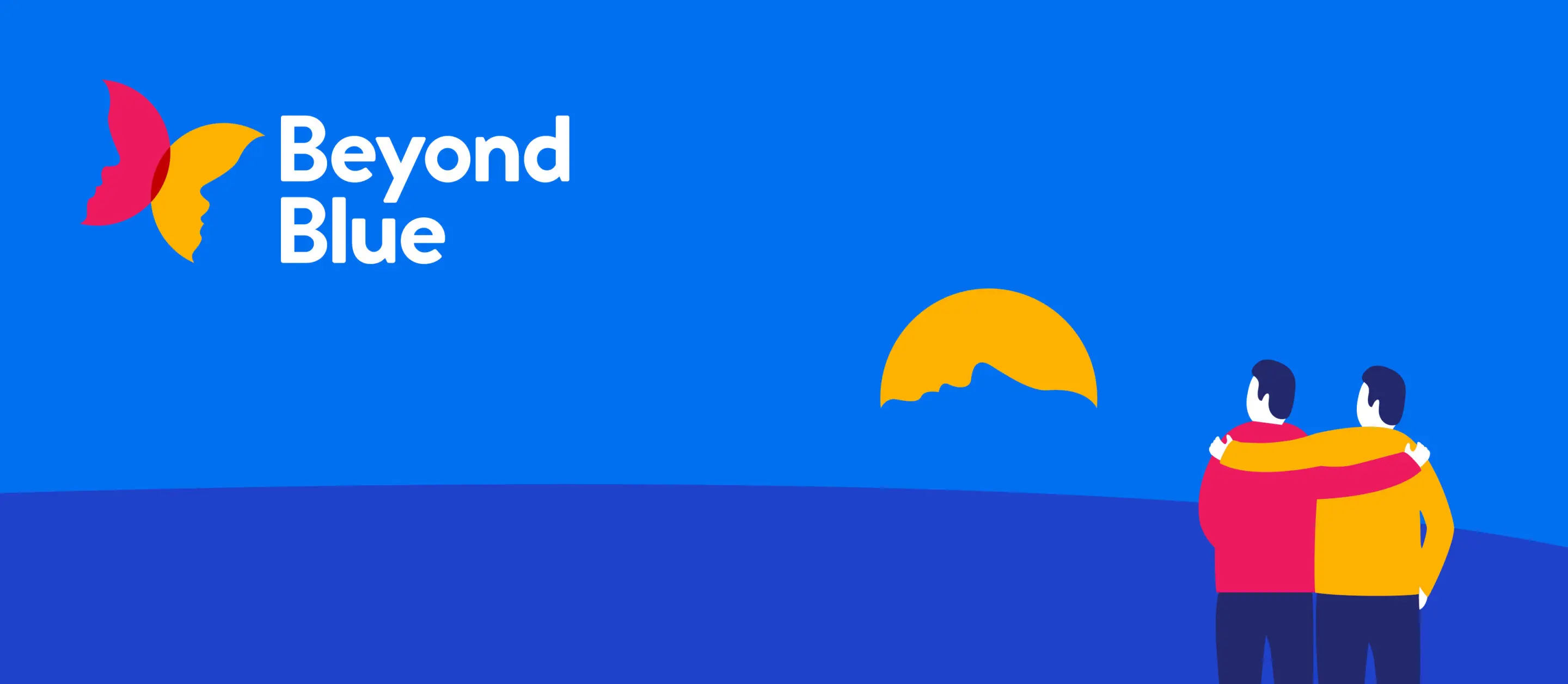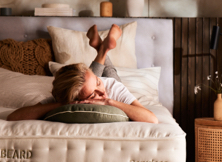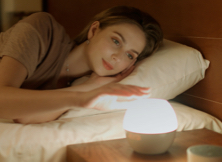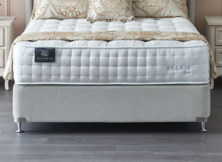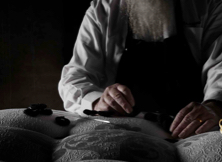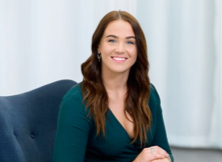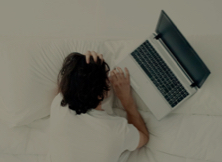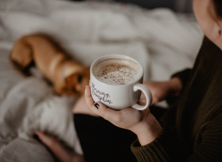If you’re suffering from back pain, you’re not alone.
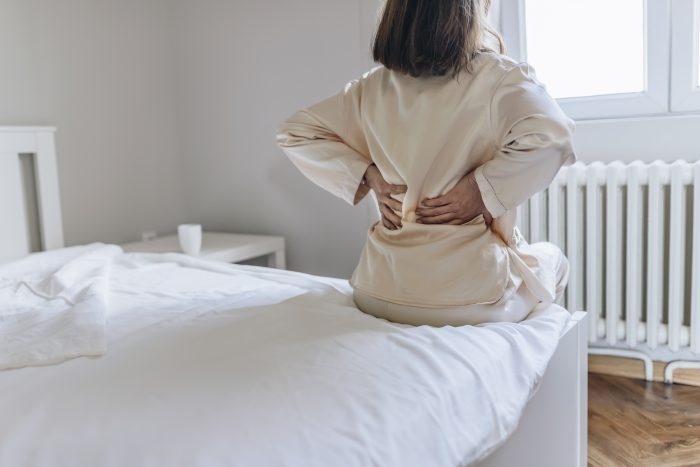
According to data from the AIHW, around 4 million Australians, or 1 in 6, experience lower back pain. A number of things can cause lower back pain, such as poor posture, sudden movements, injuries from exercise, hormones, and bad sleeping posture.
If you’re experiencing stiffness, aches or tension in your lower back, switching up your sleeping position may help alleviate some of the pain. In this article, we explore the link between sleep and back pain, and share the best sleeping position for back pain in collaboration with chiropractor Dr. Miranda Moorghen.
The link between sleep and lower back pain
Research has shown that lower back pain and sleeping problems often go hand in hand. Lower back pain can make it challenging to get comfortable enough to fall asleep or stay asleep. On the flip-side, people who experience problems with sleep are more likely to begin experiencing lower back pain, or have their existing pain get worse.
What’s more, the position we sleep in can either contribute to our discomfort or alleviate it. Sleep is a chance for our bodies to relax, heal and grow. Ideally, our spines will naturally have 3 curves (an “S” shape with a backwards “C” on top):

Source: Mayo Clinic
We should try to support our body along the length of these curves when we’re asleep. However, this is often easier said than done and many people alter from the norm (thus requiring slightly different supports), or experience changes to their bodies at different stages of life.
When we sleep, we’re fully unconscious, which means we can end up twisting our spine into unnatural positions or tucking our pelvis and putting added pressure on our lower back. When we stay in this position for hours on end, this can cause pain and stiffness in the morning (as well as throughout the day) and interfere with our quality of the sleep.
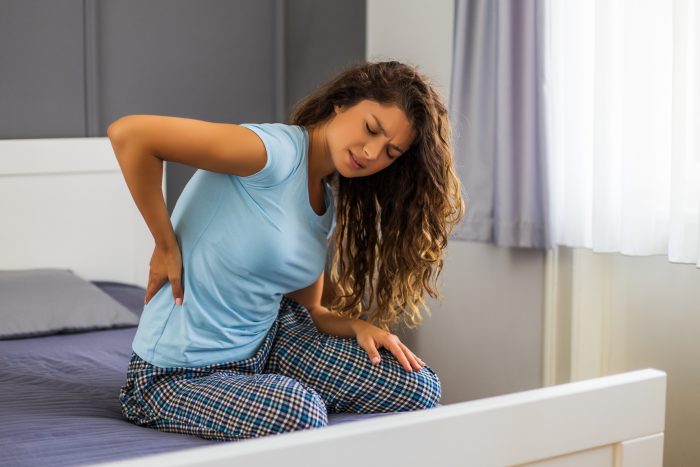
“Sleep is vital for our health and wellbeing. When we sleep, our bodies relax, replenish, learn and heal. If we are in pain, it can be very difficult to find a comfortable position to fall asleep in, or we may be disturbed during the night because of it. This hinders all the good things that usually happen while we “switch off”,” says Miranda.
“Sadly, a lot of people are “putting up with” poor sleep and the effects that it has on day-to-day life, without getting the help they need to alleviate it. This means that oftentimes, people are suffering when they simply don’t need to.”
3 of the best sleeping positions for back pain
The best sleeping position for back or neck pain are the ones that offer support for our spine during rest. If you’re having trouble sleeping due to lower back pain, or you’re waking up with aches and stiffness, these sleeping positions may help.
1. Sleep on your side with your bottom leg bent
It’s rare for a person to have “textbook normal” curves and a well-functioning spine. Often, we also have sideways curves, which can be completely normal and healthy — but these require us to adjust our sleeping position as well.
Sleeping on your side with your bottom leg bent ensures your spine is as neutral as possible when talking about the forwards and backwards curves on your spine (also known as lordoses and kyphoses). This position will lessen some of the discomfort from various causes of lower back pain, and keeps your spine in a safe, neutral position — regardless of your individual body. The bend in your bottom leg also makes it almost impossible for you to twist forwards and torque your spine. If you roll, you will roll as a unit onto your back, which is healthier than winding up on your front or in a twisted position.
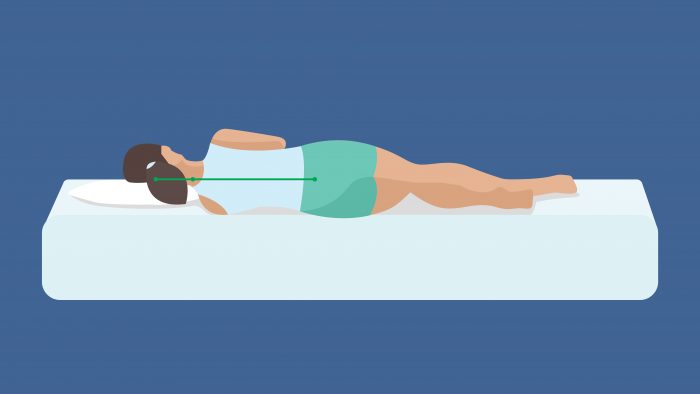
If you have a sideways curve, you may need to be mindful about which side you sleep on and, if you need to, prop with extra support under your sides.
“Make sure your pillow is at the height of your shoulders after the weight of your head is on it. You can add a pillow between your thighs or knees to stabilise your pelvis and lower back even more if necessary. This position is also great for pregnancy as you can keep your tummy supported. I always tell my patients to remember the Bs: Bottom leg Bent in Bed,” says Miranda.
2. Sleeping on your back with a pillow under your knees
Is sleeping on your back good? For most people, absolutely. Lying on your back is one of the best sleeping positions for a healthy spine providing all curves are appropriately supported. When we lie on our back in a neutral position, it evenly distributes our weight across the full length of our body’s surface. Sleeping on our back with a supportive pillow also keeps our head, neck and spine in a neutral position and in a good sleeping posture.
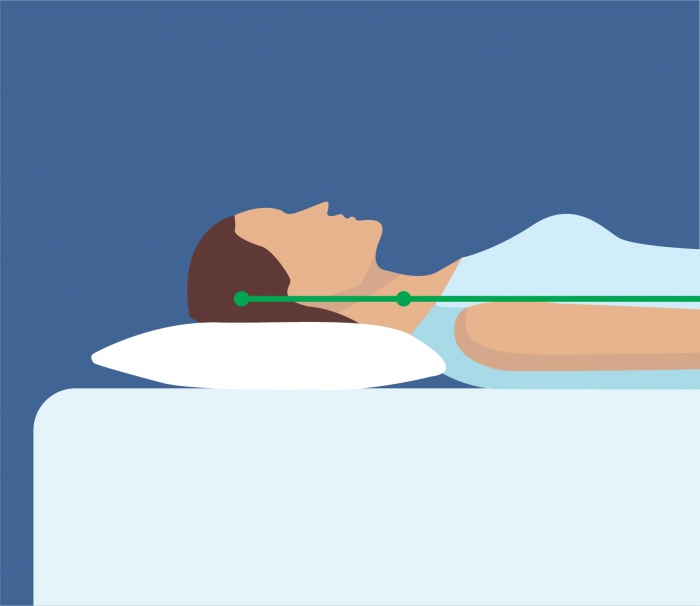
If lying flat on your back is creating added pressure on your back, try placing a pillow under your knees. Elevating your knees slightly will take the strain off your lower back, as it helps to flatten out your lumbar curve and open up the spaces between your spinal column. However, be careful because reducing a natural curve can cause its own issues.
If you don’t move much in your sleep, you can try placing a small rolled-up towel under the small of your back to add more support.
3. Sleep on your front with a pillow under your stomach
If you naturally gravitate towards this sleeping position, or have a facet joint issue, place a small pillow under your lower abdomen to take some of the pressure off your lower back, and opt for a thin pillow under your head (or no pillow at all) to reduce neck strain. Both pillows will help prevent your back from sinking into a “u” shape, which can put added pressure on your spine.
Again, there are exceptions to the rules. If you have a disc injury, sleeping with a pillow under your lower abdomen may deliver temporary relief but could prolong or even intensify your injury- generally people find it much harder to “get going” in the morning.
The position of our head is another reason why front sleepers often experience back pain. When we lie on our stomach, our head is normally turned to one side. This twists our spine and spinal cord, and places extra pressure on our neck and shoulders.

One way to avoid this is to place a rolled-up towel or a thin pillow under your forehead. This gives your nose and mouth enough breathing room, and gets rid of the need to turn the head to one side.
“Be careful that this doesn’t increase the angle of your neck in the opposite direction. This is definitely the most risky sleeping position but there are cases where it is unavoidable, so if you need to, it’s best to use it as safely as possible,” says Miranda.
Other tips to alleviate lower back pain when sleeping
Alternate sides if you’re a side sleeper
We naturally prefer sleeping on one side to the other. However, if you’re already experiencing back and neck pain, doing this might create muscle imbalances or lead to even more pain. If you find yourself always falling asleep on one side, make an effort to switch sides before dozing off. Even if you end up shifting to your preferred side in the middle of the night, you’ll still help take the pressure off — at least for a little while.
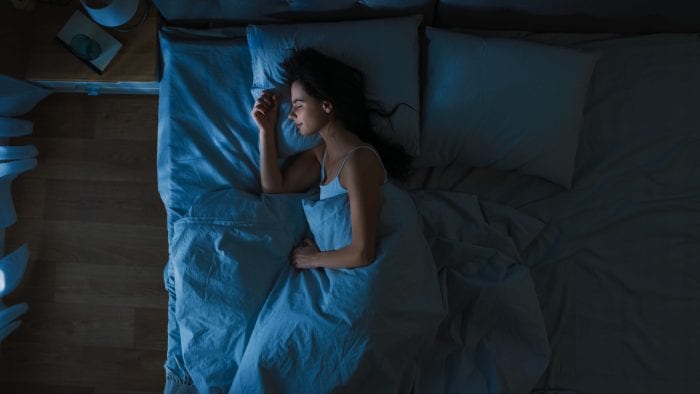
Invest in a quality mattress for back pain
A good mattress should support your body during sleep, as a sleeping surface that’s too soft may cause different parts of your body to sink in too deep or cause your joints to twist and turn.
King Koil by A.H. Beard features an innovative Reflex support technology that responds to your body’s unique size and shape to deliver the level of support your body needs. Plus, they’re the only mattress recommended by the International Chiropractors Association.
Not sure which mattress to choose? Try our free A.H. Beard Mattress Finder quiz. Answer a few quick questions and find your ideal mattress in just 60 seconds.
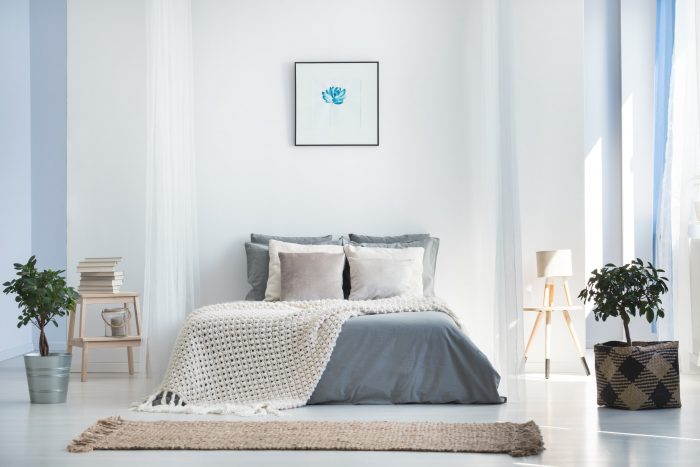
Strengthen and lengthen
Although it’s tempting to rest when you’re experiencing lower back pain, research shows that slow and gentle movement is helpful to reduce back pain. A strong core also plays a vital role in supporting our bodies while awake and asleep.
Pilates is a great way to build core strength and flexibility while promoting proper alignment in our bodies. Start the day with the A.H. Beard x Fluidform Pilates Morning Workout, or unwind and release your spine in the afternoon or evening with the A.H. Beard x Fluidform Pilates Afternoon Workout.

Work with a chiropractor
A chiropractor is a primary healthcare professional who can help diagnose and provide care for all sorts of acute, chronic or niggling health problems. With a focus on the spine, pelvis, brain and nerves, chiropractors use hands-on techniques to adjust your spine and safely resolve issues that may be affecting your nervous system. Having symptoms, such as pain, discomfort, tingling, numbness, restlessness and lack of motion all indicate it is time to seek help.
Know when to see the doctor
If you’re experiencing unremitting back pain, it might be time to pay a visit to the doctor. This is particularly important if your pain worsens over time, or if you find the pain is radiating to other parts of your body (such as the legs).

